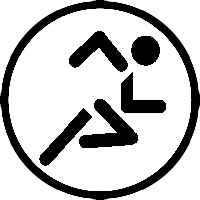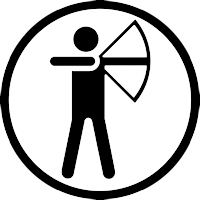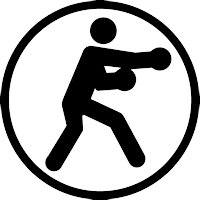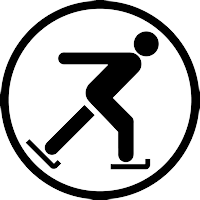By Charles Moffat - November 2014. Updated February 2019.
One of the most frequently asked questions I receive is what equipment archery students should purchase, and how to tune it.
To answer this question I first need to balance how much a student wants to spend with whether they are planning to compete eventually – or if they want to jump straight into competitions, and if so, what kind of competitions because Olympic archery is really only one style of competitive shooting.
There is Arco Nudo (no gadgets), Flight Archery, Field Archery, Clout Shooting, 3D competitions, and some competitions even have moving targets. There is even more bizarre archery sports like Equestrian Archery (on horseback), Archery Biathalon (cross country skiing combined with archery), and other similar events. I personally think it would be fun if someone made an Archery Obstacle Course, wherein participants must make their way their way through an obstacle course as quickly as possible and score as many points as possible.
My recommendation regardless of what style of competition they are planning to get into is to get a beginner bow for that style – just to see if you like it. Or if you are not certain then you should start with the basic 3-piece takedown recurve. (To browse various types of 3-piece bows please read the reviews posted on ArcheryToronto.ca: Review of Three Piece Takedown Recurve Bows. The links below are hyperlinked to the individual reviews for the bows mentioned and will take you to that specific review.)
The recurve bows I recommend most for beginners on a budget are:
The Jandao Recurve is identical to the PSE Razorback, the only difference is the label and the price. The bow is available in 2 lb increments.
Price is $120, although prices vary so you may need it is a higher price at your local store.
The Samick Sage is prettier than the Jandao, but you have to be able to pull 25 lbs easily if you want to buy it because it is only available in 5 lb increments, starting at 25.
Price is $150, although prices vary so you may need it is a higher price at your local store.
Before purchasing either of these bows however I first need to test the strength of the beginning archer. Normally I do this while teaching the archery lesson, during which I start the student off with a light poundage bow – 18 lbs – and then have them shoot with it for 30 minutes or so to see how well they can pull it back, how easily they fatigue, and so forth.
Commonly beginners discover that archery involves a lot more physical strength than they were expecting – even to pull a 18 lb bow (which is considered to be a small amount when compared to more experienced archers that are typically pulling between 30 and 60 lbs). Don’t expect to be pulling large amounts in the beginning however because beginners often have weak back muscles and complementary muscles which are not used to the strain. Attempting to pull more than you can will result in arm, shoulder and back pain – and unlike weightlifters who like to claim “no pain no gain”, in this case pain can lead to chronic strain problems that will prevent you from practicing altogether, so why risk a disability when you can take your time and progress at a safer speed? Ego? Ego is the bane of archers and messes with both their body and their mind, both of which you need to be top form if you are to succeed.
If a person is petite or skinny I typically advise them to start with either an 18 or 20 lb bow, which means they will end up going for the Jandao bow mentioned above or a bow similar to that.
If a person is stronger / more robust they might be able to handle a 24, 25 or 26 lb bow, which means they can choose between a 24 or 26 lb Jandao or a 25 lb Samick Sage.
Someone who is quite strong (football player esque) can handle a 28, 30 or 32 lb bow, which means they can choose between a 28, 30 or 32 lb Jandao or a 30 lb Samick Sage.
Exception – If you are purchasing a compound bow and plan to be hunting with it you will want to set it up for 40 to 50 lbs. Have them do that in the store for you when you purchase it. Preferably buy one that is easy to adjust (the Diamond Infinite Edge for example is very easy to adjust and available at Bass Pro in Vaughan). When choosing what weight to use you will want at least the minimum poundage legally required for whatever you are hunting. Hopefully the compound bow you are choosing has a high let off rate (70 to 85% would be nice). Make sure you can actually pull it back and hold it steady.
Some people will likely ignore my recommendations when it comes to starting with a low poundage bow. People are certainly free to choose bows that are more powerful than they can properly handle and I won’t be surprised when such people tire too easily, give up because it is too difficult, etc. You have to think of it a bit like you are at the gym and you go over to the dumbbells. Which set of dumbbells do you pick? The big 30 lb dumbbells, the medium-sized 25 lb dumbbells, or the smaller 15 or 20 lb dumbbells. Wisdom tells us that we should start low and work our way up. Ego tells you “Pick the biggest one! Pick the biggest one!”
However there is a trick to this. The advantage to three-piece recurves is that the brand model limbs can be purchased separately and are interchangeable, which means you can always buy more powerful limbs later on. Thus my strong recommendation is that you start low, with a comfortable number, and then after you’ve been shooting for a good period of time (3 months or more) then when you feel ready you can come back and buy an extra pair of limbs for your bow which are more powerful.
Thus if you purchase a 25 lb Samick Sage for example you might come back later and buy 30 or 35 lb limbs when you feel you are ready for a challenge.
I have seen beginner archers go out and buy a 60 lb bow they can’t even string properly, let alone pull. Presumably the bow they purchased either ends up in the closet collecting dust or they sell it for a loss and buy one they can actually use properly.
Tuning your Arrows
When it comes to tuning your arrows you want arrows that have the correct spine (flexibility) for the bow you are using. An arrow that is too flexible will snap and break. An arrow that is not flexible enough won’t flex properly as it flies through the air, will be too heavy, less accurate, etc. To get the most accuracy you want arrows that are the correct spine.
To do this we first need to determine your draw length. With your bow arm extended (for most people this will be your left arm) measure the distance from the base of your thumb (not the tip, just the base, closer to your wrist) to the right corner of your mouth. The measurement, depending on your height, will usually be between 26 and 32 inches. For most people it will be about 28 to 30 inches. This indicates the length of the arrow you should be purchasing in order to attain full draw. Some people also add an extra 1/2 or 1 inch to the total just for safety’s sake or to give them the ability to overdraw the arrow.
In a store they will sometimes have an arrow or a stick with measurements on it they can use to give you an accurate measurement.
Many stores have 29 inch pre-cut arrows that are for sale, which will suit most people who are of average height. Anyone shorter than that can choose between leaving them that length (will be less accurate) or having them cut shorter so they fit your draw length better.
Next you need to read the following chart, which is also available on my website at Three Frequently Asked Questions about Archery Equipment. Using the draw length measurements across the top, compare that with the weight of your bow going down the left side – then find the corresponding 3-digit Arrow Spine Number in the middle. So if you are using a 25 lb Samick Sage and have a 29 inch draw, then you should purchase 600 spine arrows.
A big mistake many beginners make is that they end up with a pile of mismatched arrows. Maybe they lost a bunch, maybe they found some (and neglected to put them in the lost and found box), or maybe they even found broken arrows and decided to fix them (giving new life to broken arrows is a personal hobby of mine). What you will find however is that these arrows will be different weights, different spines, different lengths, and consequently each arrow will shoot differently – which means your chance of making clusters of arrows on the target will be dramatically reduced. (To learn more about how to shoot arrow clusters read some of the posts on my Archery Tips page.) Ideally you want to have arrows which weigh the same, are the same length, the same spine, everything is identical. Including the Arrowhead.
Tuning your Arrowheads
To get a better understanding of this please read my post “What the eff is FOC Weight?” which explains the acronym Front-Of-Center and how it applies to arrow balance. Basically what you want is at close range you want to be using arrowheads that are suited to the task, which in this case are heavier and moves the balancing point closer to the tip of the arrow – and makes them more accurate. At longer distances you want to be using lightweight arrowheads, which moves the balancing point closer to the middle – but still Front of the Center of the arrow.
- At 20 to 30 yards you want to be using 125 to 150 grain arrowheads.*
- At 40 to 50 yards you want to be using 85 to 100 grain arrowheads.*
- At 60 yards or more you want to be using 50 to 75 grain arrowheads.*
When it comes to tuning your arrowheads there is no “one size fits all”. For beginners it is recommended you buy 125 grain arrowheads (150s are harder to find in stores and are often made for wider shaft arrows) and then stick to the closer targets anyway until your skill has improved to the point that your arrow clusters are the size of a doughnut – and you are scoring at least 40 out of 50 every round with 5 arrows on a standard FITA 40 cm target. If you cannot shoot at least a score of 40 with 5 arrows regularly on the short distances then you are simply not ready to be trying to hit the longer distances.
Tuning your Fletching
Normally the fletching comes with the arrows, so unless you want to be cutting the fletching off and gluing on new fletching you probably are not going to be tuning this so much as you are going to be purchasing arrows with the fletching already on there – or ordering custom made arrows with the fletching you want.
The colour of the fletching doesn’t matter with respect to accuracy – although having bright, easy to find colours on there certainly helps if you ever lose an arrow.
What matters more with fletching is the length of the fletch, the width of the fletch, the shape of the fletch – and the type of fletching you are using.
If you are using a compound bow you will want to be using Vane Fletching – vanes are stiff pieces of plastic, and are typically either short or long fletch.
If you are using a longbow, traditional recurve, shortbow, etc then you will want Feather Fletching – which comes in a variety of shapes and sizes, and is typically between 2 and 5 inches long.
If you plan on shooting at birds or doing small game hunting (or competing in 3D events) you will likely want Flu Flu Feathers – which are extra wide (2″ or so) feather fletched arrows that are often brightly coloured to make them very easy to spot.
The length of fletching effects its accuracy at different distances, depending on the wind conditions. Longer fletches are more accurate on a non-windy day, shorter fletches are more accurate on a windy day. At short distances there won’t be a huge difference in accuracy because the arrow isn’t in the air long enough for the wind to effect it overly much, but at longer distances the longer fletch arrows will give you more accuracy under normal conditions because it keeps the arrow going straighter – whereas shorter fletch will be more accurate if it is windy because the wind will catch the larger fletching sideways and turn the arrow so it loses much of its accuracy. (Obviously you don’t want to be using Flu Flu Arrows on a windy day.)
When it comes to shape of the fletching there are many different kinds, including:
Parabolic, Shield and Traditional are pretty commonly used. Banana, Low-Banana, Swift, T-Hawk, and Pope & Young all have their pros and cons.
The shape and size of the fletching effects how straight it flies, how fast it flies, how much it contacts the arrowrest (or in the case of longbow/shortbow archers shooting off their glove, how much it contacts their glove).
The Swift fletch design for example is basically identical to the Parabolic, but has been trimmed somewhat to make it thinner and lighter in an effort to give it more speed. The Low-Banana is the same idea – nearly identical to the Banana, but designed for speed instead of accuracy.
What style of fletching an archer chooses often depends on the style of shooting you are using the arrows for and whether you want more speed, more accuracy or maybe you just don’t want the fletch rubbing against the arrowrest so much.
Tuning your Arrowrest
If you are completely new to archery you might not know what an arrowrest is. Scroll up, look a the photo at the top. That is the riser from a Samick Sage with a cheap plastic arrowrest on there.
Now pay attention. Your arrowrest is arguably one of the most important pieces of equipment you will own.
Why? It is because every time an arrow leaves your bow the first and last thing it touches will be the arrowrest, and you want your arrowrest to be accurate and consistent. If you buy a cheap plastic arrowrest don’t expect it to stay the same with every shot you do. With every shot the plastic wears down, it becomes uneven, it starts to rip, and it will eventually fall apart and have to be replaced. There is also the matter that the harder and more durable a plastic arrowrest is the more it rubs against the fletching during each shot, which can lead to inaccuracy if it is rubbing too much or rubbing inconsistently.
More traditional archers like to use fur arrowrests (available at various archery stores) which allows the arrow to slide across the surface of the fur gently and this cushion of fur allows the arrow to not be rubbing against anything too hard that would cause it to lose accuracy.
Example: The bow on the right features a traditional fur arrowrest which has been glued in place.
Now the fur will eventually wear down, but the good news is that fur is surprisingly durable despite being so soft and it should last a good long time before it needs to be replaced.
Another option is to buy a more modern arrowrest made of metal and other materials.
Your options are drop down arrowrests, drop away arrowrests, spring loaded arrowrests, wire arrowrests, whisker biscuit arrowrests and hostage arrowrests. There are many more types, but I am not going to list them all.
When it comes to these modern arrowrests (many of which are most commonly used on compound bows) they usually come with instructions on how to tune them. This will usually require you to tune the arrowrest to the weight of the arrow, to adjust it to left or right, up or down, to make certain it is centered on both the X and Y axis, and so forth.
For best results read the instructions that come with the arrowrest so you can tune it properly. I am not going to give the tuning instructions here for the literally hundreds of different arrowrests that are available out there.
If you purchased a compound bow then your bow likely came with either a whisker biscuit or a hostage arrowrest. Both are quite good and you likely won’t even need to tune them if they were already tuned in the factory.
Tuning your Hand Gear
How you release your shot is equally important as what you are using. Regardless of whether you choose to go with a tab, gloves or mechanical release you will want one that works well for you. Some people (myself included) find tabs annoying. I would rather shoot with a thumb ring than shoot with a tab. This is an area of shooting that comes down to personal preference (unless you are shooting compound, in which case you have only two choices: mechanical or gloves).
Pick the method you find to be the most comfortable for you and learn to shoot with that as best you can. As time progresses try other styles of gloves, tabs, etc and find the one that works best for you.
For example I have 6 different styles of shooting gloves in a box at home, I also have 3 different tabs, 2 thumb rings, and 2 mechanical releases. Of these I have determined that of all the equipment I use, I prefer the Neet gloves (size large), the Regent Archery Persian-style gloves (size medium), and the more expensive mechanical release because it just works better and is less fussy to use – not because it is more expensive, simply because it is the easiest to use.
Tuning what hand gear you use for shooting with will be something you play with along the way. For beginners I recommend you find a pair of Neet gloves in your size and then experiment with other styles of releasing as you progress. Don’t go trying to skip to thumb rings or something more difficult to learn until you have mastered how to shoot using something simpler.
Other Gadgets
If you are looking to tune a sight, find the right stabilizer that suits you and tune other gadgets then we are getting into more complex topics. You will need to sign up for archery lessons if you want instructions on how to tune such things. I teach all of the topics listed above and much more, but I have to go do some personal practice now so that will have to wait for another day.










































